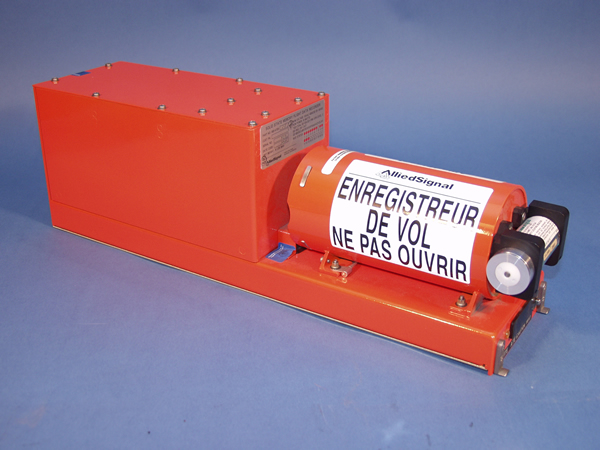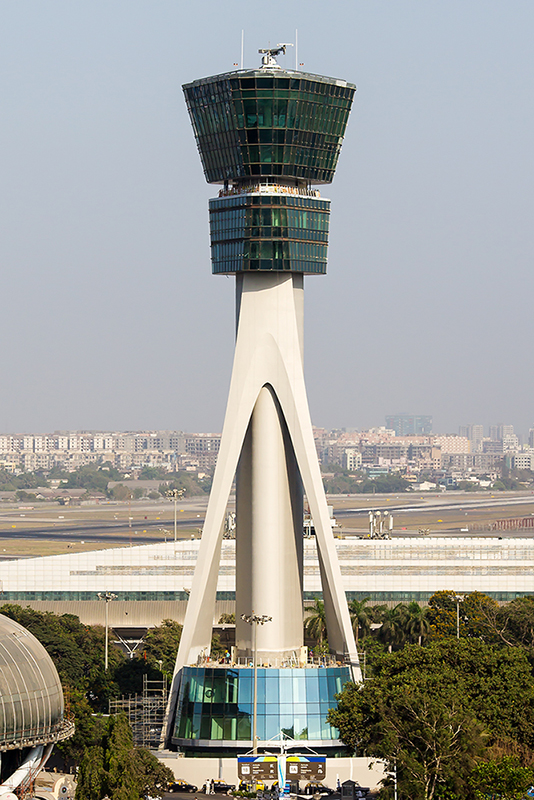|
Helikopter Service Flight 451
On 8 September 1997 Flight 451, a Eurocopter AS 332L1 Super Puma, from the Norwegian helicopter operator Helikopter Service, crashed into the Norwegian Sea, northwest of Brønnøysund, Norway. The aircraft was en route from Brønnøysund Airport, Brønnøy to Norne, an offshore Floating production storage and offloading vessel (FPSO). The accident was caused by a fatigue crack in a spline of a power transmission shaft connector, which ultimately caused the power transmission shaft to fail. All twelve people on board were killed in the crash. Aircraft The accident aircraft was an AS332 L1 Super Puma helicopter, manufactured by Eurocopter (now named Airbus Helicopters), registration LN-OPG. Background At 06:00 a.m. local time (UTC+2), Helikopter Service Flight 451 took off from Brønnøysund Airport with two pilots and ten passengers, heading for the Statoil operated FPSO Norne. The route was a daily shuttle due to lack of accommodation on Norne during the busy per ... [...More Info...] [...Related Items...] OR: [Wikipedia] [Google] [Baidu] |
Eurocopter AS332 Super Puma
The Airbus Helicopters H215 (formerly Eurocopter AS332 Super Puma) is a four-bladed, twin-engined, medium-sized, utility helicopter developed and initially produced by French aerospace company Aérospatiale. It has been subsequently manufactured by the successor companies Eurocopter and Airbus Helicopters. The Super Puma is a re-engined and larger version of the original Aérospatiale SA 330 Puma. Development of the Super Puma was carried out during the 1970s, based on the successful SA 330 Puma. While retaining a similar layout, the fuselage was redesigned to increase its damage tolerance and crashworthiness, while composite materials were also more extensively used. Furthermore, a pair of more powerful Turbomeca Makila turboshaft engines was also adopted, along with a more streamlined nose, amongst other changes. Two distinct fuselage lengths, a shortened and stretched form, were developed from the onset. On 5 September 1977, the ''SA 331'' preproduction prototype performe ... [...More Info...] [...Related Items...] OR: [Wikipedia] [Google] [Baidu] |
Statoil
Equinor ASA (formerly Statoil and StatoilHydro) is a Norwegian multinational energy company headquartered in Stavanger, Norway. It is primarily a petroleum company operating in 36 countries with additional investments in renewable energy. In the 2020 Forbes Global 2000, Equinor was ranked as the 169th-largest public company in the world. In 2023, the company was ranked 52nd in the same list. the company has 21,126 employees. The current company was formed by the 2007 merger of Statoil with the oil and gas division of Norsk Hydro. As of 2017, the Government of Norway is the largest shareholder with 67% of the shares, while the rest is public stock. The ownership interest is managed by the Norwegian Ministry of Petroleum and Energy. The company is headquartered and led from Stavanger, while most of their international operations are currently led from Fornebu, outside Oslo. The name ''Equinor'' was adopted in 2018 and is formed by combining ''equi'', the root for words such ... [...More Info...] [...Related Items...] OR: [Wikipedia] [Google] [Baidu] |
Avionics
Avionics (a portmanteau of ''aviation'' and ''electronics'') are the Electronics, electronic systems used on aircraft. Avionic systems include communications, Air navigation, navigation, the display and management of multiple systems, and the hundreds of systems that are fitted to aircraft to perform individual functions. These can be as simple as a searchlight for a police helicopter or as complicated as the tactical system for an airborne early warning platform. History The term "avionics" was coined in 1949 by Philip J. Klass, senior editor at ''Aviation Week & Space Technology'' magazine as a portmanteau of "aviation electronics". Radio communication was first used in aircraft just prior to World War I. The first Airborne radio relay, airborne radios were in zeppelins, but the military sparked development of light radio sets that could be carried by heavier-than-air craft, so that aerial reconnaissance biplanes could report their observations immediately in case they we ... [...More Info...] [...Related Items...] OR: [Wikipedia] [Google] [Baidu] |
Turbine
A turbine ( or ) (from the Greek , ''tyrbē'', or Latin ''turbo'', meaning vortex) is a rotary mechanical device that extracts energy from a fluid flow and converts it into useful work. The work produced can be used for generating electrical power when combined with a generator.Munson, Bruce Roy, T. H. Okiishi, and Wade W. Huebsch. "Turbomachines." Fundamentals of Fluid Mechanics. 6th ed. Hoboken, NJ: J. Wiley & Sons, 2009. Print. A turbine is a turbomachine with at least one moving part called a rotor assembly, which is a shaft or drum with blades attached. Moving fluid acts on the blades so that they move and impart rotational energy to the rotor. Gas, steam, and water turbines have a casing around the blades that contains and controls the working fluid. Modern steam turbines frequently employ both reaction and impulse in the same unit, typically varying the degree of reaction and impulse from the blade root to its periphery. History Hero of Alexandria demonstrat ... [...More Info...] [...Related Items...] OR: [Wikipedia] [Google] [Baidu] |
Bendix Drive
A Bendix drive is a type of engagement mechanism used in starter motors of internal combustion engines. The device allows the pinion gear of the starter motor to engage or disengage the ring gear (which is attached to the flywheel or flexplate of the engine) automatically when the starter is powered or when the engine fires, respectively. It is named after its inventor, Vincent Hugo Bendix. Operation The Bendix system places the starter drive pinion on a helically-splined drive shaft of the starter motor. When the starter motor first begins turning, the inertia of the drive pinion assembly momentarily resists rotation even though the shaft through its center is turning. Since the pinion has internal splines matching those on the drive shaft, this causes the pinion gear to slide axially to make initial side contact with the gear teeth on ring gear of the engine. The pinion then rotates enough to allow the gears to mesh, after which the pinion then continues along the sha ... [...More Info...] [...Related Items...] OR: [Wikipedia] [Google] [Baidu] |
Norwegian Accident Investigation Board
The Norwegian Safety Investigation Authority (NSIA; , SHK) is the government agency responsible for investigating transport-related accidents within Norway. Specifically, it investigates aviation accidents and incidents, rail accidents, maritime accidents, select traffic accidents, and serious incidents in the defence sector. All investigations aim to find underlying causes and to improve safety; criminal investigation is not part of AIBN's mandate. Subordinate to the Ministry of Transport, the agency is located on the premises of Kjeller Airport in Skedsmo. Traditionally marine accidents were investigated Institute of Maritime Enquiry, which mixed safety investigation, criminal and civil liability into a combined investigation. Aviation accidents and major rail accidents were investigated by ''ad hoc'' commissions. The Accident Investigation Board for Civil Aviation was established as a permanent organization on 1 January 1989, originally based at Oslo Airport, Fornebu. From ... [...More Info...] [...Related Items...] OR: [Wikipedia] [Google] [Baidu] |
Flight Recorder
A flight recorder is an electronic recording device placed in an aircraft for the purpose of facilitating the investigation of aviation accidents and incidents. The device may often be referred to colloquially as a "black box", an outdated name which has become a misnomer—they are now required to be painted Safety orange, bright orange, to aid in their recovery after accidents. There are two types of flight recording devices: the flight data recorder (FDR) preserves the recent history of the flight through the recording of dozens of parameters collected several times per second; the cockpit voice recorder (CVR) preserves the recent history of the sounds in the cockpit, including the conversation of the pilots. The two devices may be combined into a single unit. Together, the FDR and CVR objectively document the aircraft's flight history, which may assist in any later investigation. The two flight recorders are required by international regulation, overseen by the Internation ... [...More Info...] [...Related Items...] OR: [Wikipedia] [Google] [Baidu] |
Estimated Time Of Arrival
The estimated time of arrival (ETA) is the time when a ship, vehicle, aircraft, cargo, person, or emergency service is expected to arrive at a certain place. Overview One of the more common uses of the phrase is in public transportation where the movements of trains, buses, airplanes and the like can be used to generate estimated times of arrival depending on either a static timetable or through measurements on traffic intensity. In this respect, the phrase or its abbreviation is often paired with its complement, estimated time of departure (ETD), to indicate the expected start time of a particular journey. This information is often conveyed to a passenger information system as part of the core functionality of intelligent transportation systems. For example, a certain flight may have a calculated ETA based on the speed by which it has covered the distance traveled so far. The remaining distance is divided by the speed previously measured to roughly estimate the arrival time. This ... [...More Info...] [...Related Items...] OR: [Wikipedia] [Google] [Baidu] |
Air Traffic Control
Air traffic control (ATC) is a service provided by ground-based air traffic controllers who direct aircraft on the ground and through a given section of controlled airspace, and can provide advisory services to aircraft in non-controlled airspace. The primary purpose of ATC is to prevent collisions, organise and expedite the flow of traffic in the air, and provide information and other support for pilots. Personnel of air traffic control monitor aircraft location in their assigned airspace by radar and communicate with the pilots by radio. To prevent collisions, ATC enforces Separation (air traffic control), traffic separation rules, which ensure each aircraft maintains a minimum amount of 'empty space' around it at all times. It is also common for ATC to provide services to all General aviation, private, Military aviation, military, and commercial aircraft operating within its airspace; not just civilian aircraft. Depending on the type of flight and the class of airspace, AT ... [...More Info...] [...Related Items...] OR: [Wikipedia] [Google] [Baidu] |
Oil Platform
An oil platform (also called an oil rig, offshore platform, oil production platform, etc.) is a large structure with facilities to extract and process petroleum and natural gas that lie in rock formations beneath the seabed. Many oil platforms will also have facilities to accommodate the workers, although it is also common to have a separate accommodation platform linked by bridge to the production platform. Most commonly, oil platforms engage in activities on the continental shelf, though they can also be used in lakes, inshore waters, and inland seas. Depending on the circumstances, the platform may be fixed to the ocean floor, consist of an artificial island, or float. In some arrangements the main facility may have storage facilities for the processed oil. Remote subsea wells may also be connected to a platform by flow lines and by umbilical connections. These sub-sea facilities may include one or more subsea wells or manifold centres for multiple wells. Offshore drillin ... [...More Info...] [...Related Items...] OR: [Wikipedia] [Google] [Baidu] |






